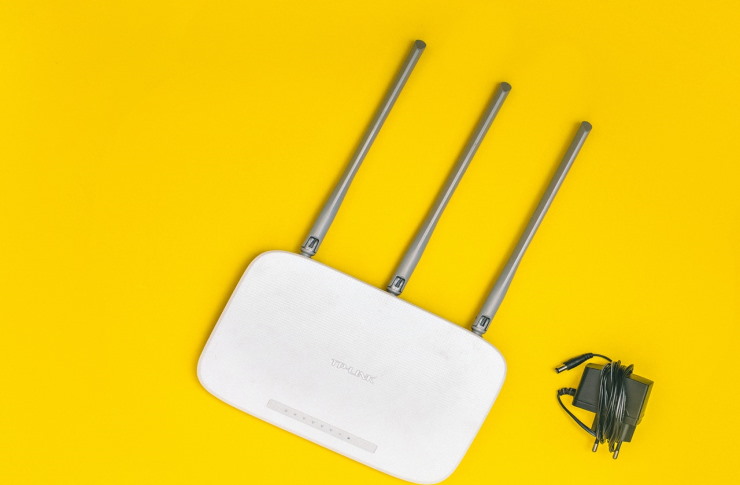Finding the Best High-Speed Internet Service in Your Area
In today’s fast-paced world, reliable internet service is a necessity, not a luxury. Whether you’re working from home, streaming entertainment, or connecting with loved ones, having access to high-speed internet can make a significant difference. This guide will help you navigate your options and choose the best high-speed internet service in your area.

Understanding Your Internet Needs
Before selecting an internet service, it’s important to assess your unique needs. Consider how many people use the internet in your household and what you use it for. Basic tasks like browsing and emailing don’t require a lot of bandwidth, but if you’re streaming in HD, gaming, or working with large files, you’ll need more speed and reliability.
For light usage, an internet package offering speeds of up to 25 Mbps can be sufficient. However, if your household has multiple devices streaming simultaneously or if you’re engaging in activities that require real-time data transfer (like online gaming or video conferencing), higher speeds, around 100 Mbps or more, would be more suitable. Understanding your specific usage is the first step in ensuring that you’re not overpaying for speeds you don’t need, or suffering from underperformance due to insufficient bandwidth.
Types of Internet Connections
Knowing the different types of internet connections available is key to making an informed decision. Here’s a breakdown of the most common options:
-
Fiber-Optic: This type of connection is known for its blazing-fast speeds and reliability. Fiber-optic internet is perfect for high-demand households, offering consistent speeds even during peak usage times. However, availability can sometimes be limited depending on your location.
-
Cable Internet: Another widely available option is cable internet. It delivers fast download speeds and is suitable for most households. However, since cable networks are shared with your neighbors, speeds can slow down during high-traffic periods.
-
DSL (Digital Subscriber Line): DSL internet uses existing telephone lines to deliver internet. It’s often available in areas where fiber or cable may not reach, but the speeds are generally lower. This option is better for households with minimal internet needs.
-
Satellite: Satellite internet is available virtually everywhere, even in remote locations. However, it tends to have higher latency and lower speeds compared to fiber or cable, which can be problematic for real-time activities like gaming or video conferencing.
Selecting the right connection type depends on both your usage requirements and what’s available in your area.
How to Check for Internet Availability in Your Area
Finding high-speed internet options in your area can sometimes be a challenge, especially if you live in a less populated region. Thankfully, many internet service providers (ISPs) offer easy-to-use tools on their websites that allow you to check availability by simply entering your address. This helps streamline your search, ensuring that you only consider options that are actually available to you.
Local providers are often a good choice, especially in rural or less densely populated areas. In some cases, smaller regional ISPs may offer competitive pricing and customer service that larger providers can’t match. On the other hand, larger national ISPs often provide more consistent speeds and coverage across different areas, making them a reliable option for urban and suburban households.
Another factor to consider is whether your area has access to fiber-optic service, as this can dramatically improve the quality of your connection. Even if fiber isn’t currently available, it’s worth checking with providers about future expansion plans, as many ISPs are continually upgrading their networks.
Factors to Consider Beyond Speed
While speed is one of the most important factors in choosing an internet service, it’s not the only one. Reliability, customer service, and pricing are all critical to a satisfying experience. Here are a few things to keep in mind:
-
Data Caps: Some internet plans come with data caps, limiting the amount of data you can use each month. If you exceed this limit, you may face additional charges or reduced speeds. Make sure to choose a plan with enough data for your household’s needs.
-
Contract Length: Many ISPs require a contract, often for one to two years. Be sure to understand the terms, including any early termination fees, before signing up. Some providers offer no-contract options, which may be more suitable if you’re unsure about your long-term plans.
-
Customer Support: Having access to responsive customer service can make a huge difference when issues arise. Check online reviews or ask for recommendations to find a provider known for their helpful support team.
-
Bundling Options: If you already use a provider for services like TV or phone, you may be able to save money by bundling your internet service. Bundling can sometimes offer significant savings and make your billing simpler, but make sure the bundled services are things you’ll actually use.
Optimizing Your Home Network for the Best Performance
Once you’ve chosen a high-speed internet provider, there are several things you can do to ensure that your home network performs at its best:
-
Router Placement: The location of your router can have a significant impact on your internet speeds. Place it in a central location, away from walls or obstructions, to ensure maximum coverage. If your home is large or has multiple floors, consider using a mesh Wi-Fi system to extend coverage throughout the entire space.
-
Wired vs. Wireless Connections: While Wi-Fi offers convenience, a wired Ethernet connection will typically provide faster and more stable speeds. If you’re engaging in high-bandwidth activities like gaming or video streaming, connecting your devices directly to the router can make a noticeable difference.
-
Device Management: Many modern routers allow you to manage connected devices and prioritize bandwidth for certain activities, like video calls or gaming. This can help ensure that critical activities get the bandwidth they need, even when multiple devices are connected.
Conclusion
Finding the right high-speed internet service for your needs doesn’t have to be overwhelming. By assessing your internet usage, understanding the types of connections available, and considering factors beyond speed, you can make an informed decision that suits your household. With the right setup and provider, you’ll enjoy reliable and fast internet service that enhances your everyday life.
By following these practical steps and keeping your individual needs in mind, you can confidently choose a high-speed internet provider that meets your needs and improves your online experience.




